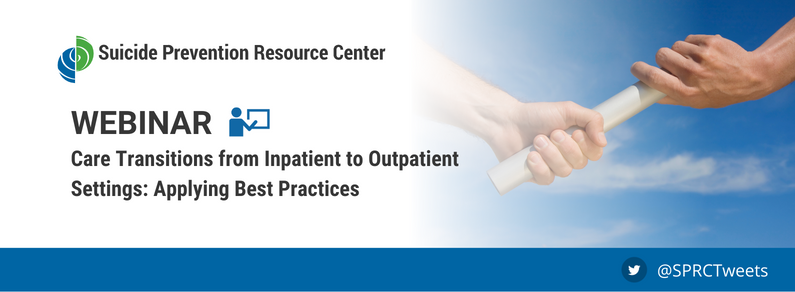 Care Transitions from Inpatient to Outpatient Settings: Applying Best Practices
Care Transitions from Inpatient to Outpatient Settings: Applying Best Practices
The risk of suicide after leaving inpatient behavioral health care is 200-300 times higher than for the general population and is highest within the first few days after discharge (Chung et al. 2019). This period of high risk lasts for up to three months after discharge (Olfson et al. 2016; Walter et al., 2019), and in the U.S. nearly 15% of people who died by suicide had contact with inpatient metnal health services in the year before death (Ahmedani et al., 2014). It is clear that the transition between inpatient and outpatient behavioral health care presents tremendous opportunity for closing a deadly gap in behavioral health care.
It is clear that the transition between inpatient and outpatient behavioral health care presents tremendous opportunity for closing a deadly gap in behavioral health care. Closing this gap requires inpatient and outpatient behavioral health organizations to work together and align strategies to ensure the safety of individuals who are likely at extremely high risk of suicide.
Closing this gap requires inpatient and outpatient behavioral organizations to work together an align strategies to ensure the safety of individuals who are likely at extremely high risk of suicide. The National Action Alliance for Suicide Prevention developed Best Practices in Care Transitions for Individuals with Suicide Risk: Inpatient Care to Outpatient Care to guide both inpatient and outpatient systems in the pursuit and implementation of evidence-based and innovative strategies to improve care transitions. One of these strategies, family involvement, contributes to increasing connectedness with family and significant others which, after a suicide crisis, strengthens interventions and supports long-term recovery (Haselden et al., 2019; Olfson et al., 2000). Companion resources are now available to guide systems toward implementing care transitions best practices, including the Inpatient and Outpatient Health Care Self-Assessments, Inpatient and Outpatient Health Care Action Planning templates, and a family involvement educational handout.
This webinar focuses on the implementation of best practices in care transitions from inpatient psychiatric to outpatient behavioral health care settings. Two exemplar organizations will highlight their care transitions initiatives, discuss the application of best practice recommendations, and share how implementation support tools were leveraged to improve care transitions practices.
